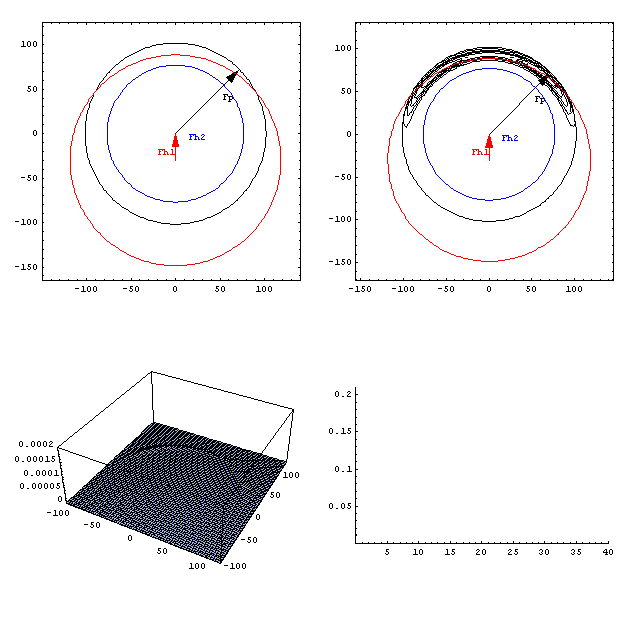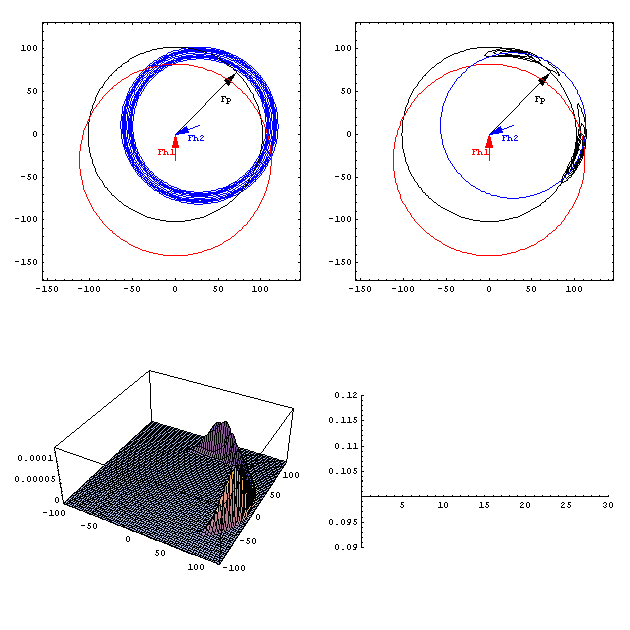
This page will be expanded at some point. At the moment, it is mostly a placeholder for some animations illustrating the likelihood function used for multiple isomorphous replacement phasing, and how that likelihood function varies as parameters are varied.

This animation shows the behaviour of the MIR likelihood target as a function of the heavy atom model, illustrated by increasing the size of the heavy atom contribution for the second derivative. The top left panel shows the Harker construction, in which the origin of the second derivative circle (blue) changes as the heavy atom contribution changes. In the top right panel, the Harker construction is overlaid with the contours showing the product of the probabilities for the three observations (native and two derivatives), as a function of the assumed true native structure factor. The lower left panel shows the same product, now multiplied by the prior probability of the true native structure factor, as a surface plot instead of a contour plot. The volume under this surface (i.e. the integral over the true native structure factor) is the MIR likelihood, shown as a function of the heavy atom structure factor in the bottom left panel.

This animation shows the behaviour of the MIR likelihood target as a function of the lack-of-isomorphism error assumed for the second derivative. The layout is similar to the figure above, except in this figure the probability for the second derivative observation is shown as contours in the top left panel. As the lack-of-isomorphism error increases, the distribution becomes broader and the likelihood increases, reaching a peak when the lack-of-isomorphism error is just enough to provide a good overlap with the other circles.
© 1999-2005 Randy J Read, University of Cambridge. All rights reserved.
Last updated: 7 June, 2005